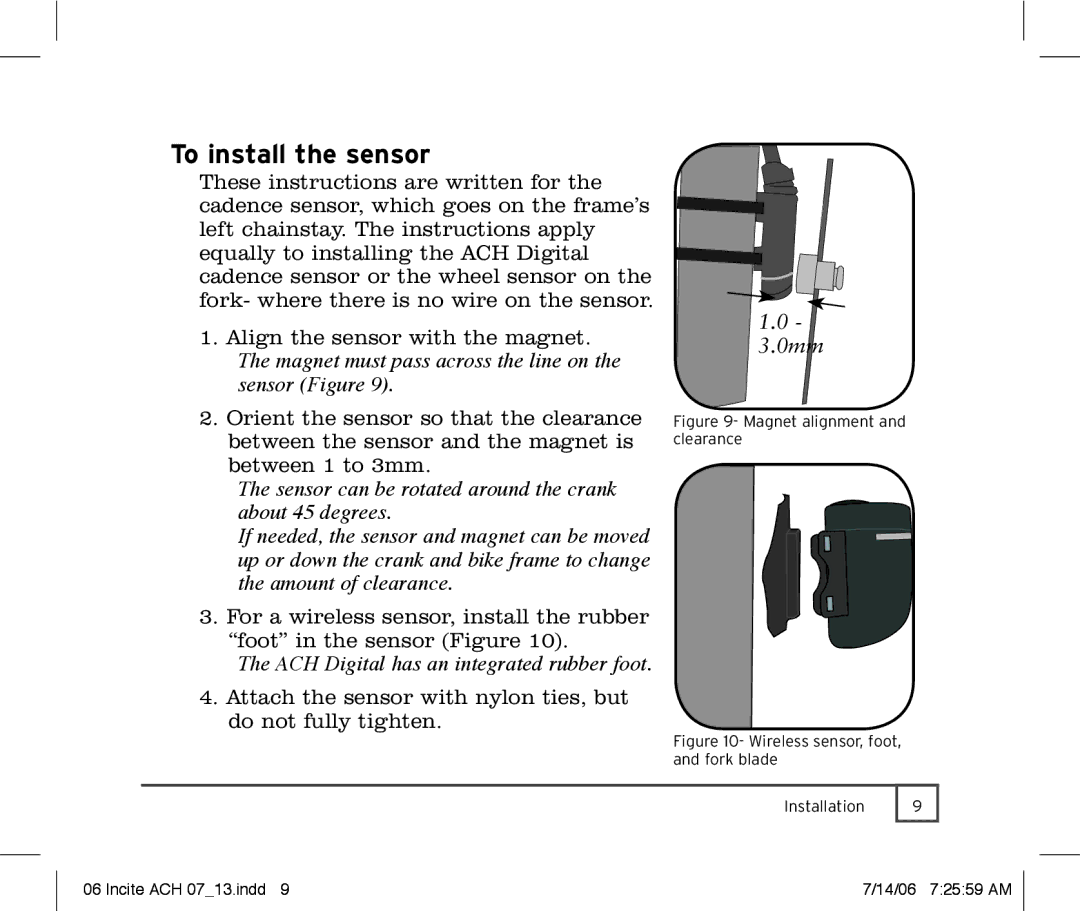Bicycle Computer specifications
The Trek Bicycle Computer is an innovative and essential device that caters to both casual riders and serious cyclists. This computer is designed to enhance each cycling experience by providing valuable data about performance, navigation, and connectivity. With a sleek design and user-friendly interface, the Trek Bicycle Computer is a must-have tool for riders looking to elevate their cycling game.At the heart of the Trek Bicycle Computer is its advanced tracking capabilities. Equipped with GPS technology, it accurately records a variety of metrics including speed, distance, elevation gain, and time. The real-time data is crucial for cyclists who want to monitor their performance and push their limits. Additionally, the device can store historical data, allowing users to analyze their progress over time and set achievable goals.
One of the most notable features of the Trek Bicycle Computer is its integration with smartphone applications. By connecting via Bluetooth, users can sync their ride data to popular cycling apps such as Strava and Komoot. This connectivity enhances the overall experience by allowing cyclists to share their achievements, compare their rides with friends, and follow guided routes.
The Trek Bicycle Computer also comes with navigation features that make it easier to explore new trails and roads. It provides turn-by-turn directions, ensuring that cyclists never lose their way during adventurous rides. The computer is designed to work well in various weather conditions, with a durable, water-resistant casing that can withstand the elements.
In terms of battery life, the Trek Bicycle Computer excels, offering extended usage on a single charge. This ensures that cyclists can go on longer rides without worrying about running out of power. The device also boasts a clear, easy-to-read display that adjusts to lighting conditions, making it easy to view critical data in bright sunlight or low-light situations.
User customization is another feature that sets the Trek Bicycle Computer apart. Cyclists can personalize their data screens to focus on the metrics most important to them, whether it's average speed, heart rate, or cadence. This customizable interface improves usability and enhances the cycling experience.
Ultimately, the Trek Bicycle Computer combines functionality, reliability, and connectivity to serve the needs of modern cyclists. With its impressive features and robust technologies, it helps riders achieve their fitness goals while discovering new routes, making every ride a fulfilling adventure. Whether commuting through the city or tackling rugged trails, this bicycle computer proves to be an invaluable companion on any journey.

